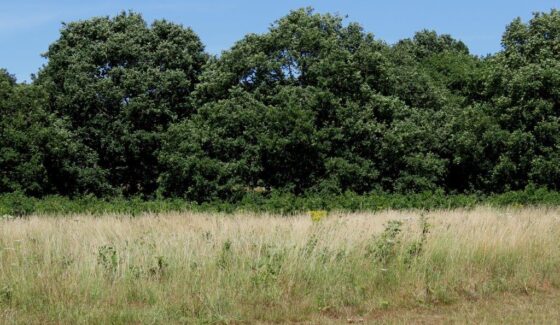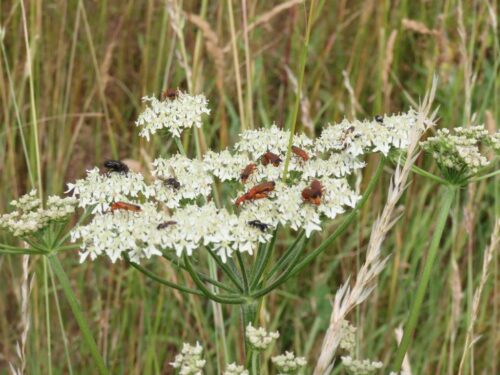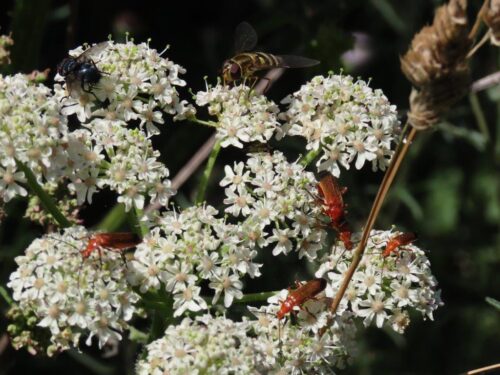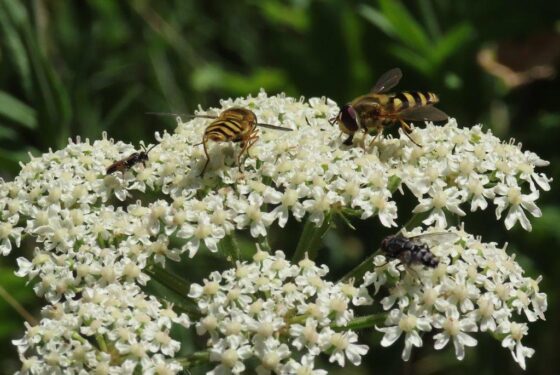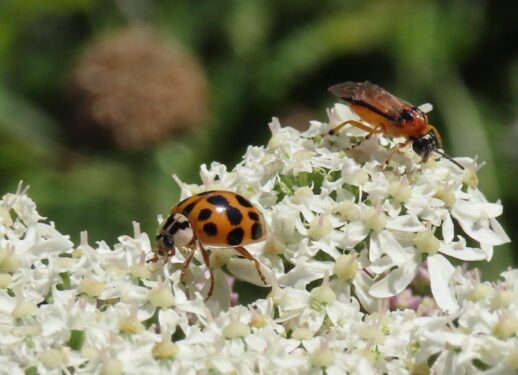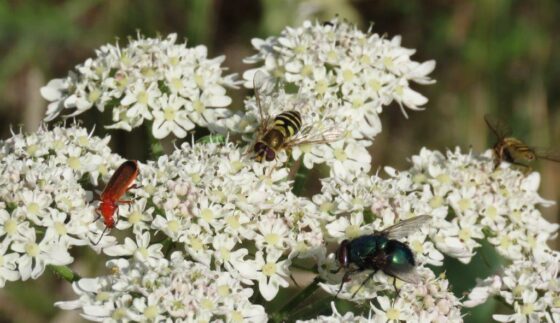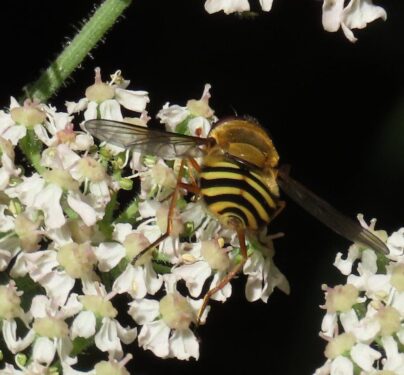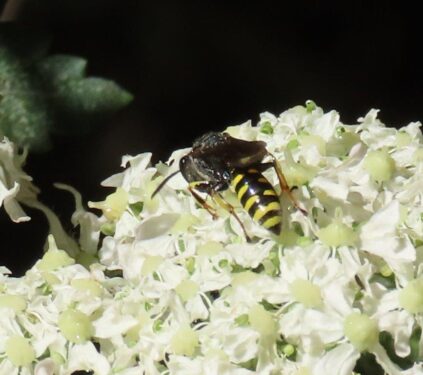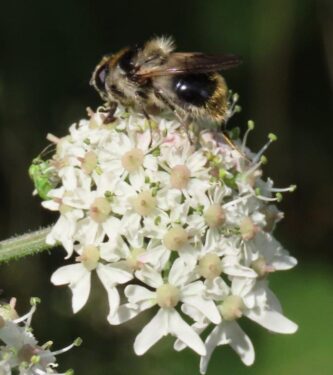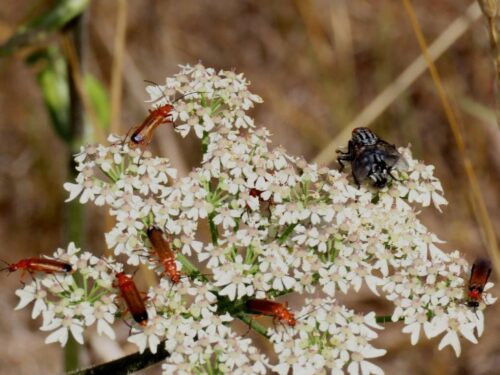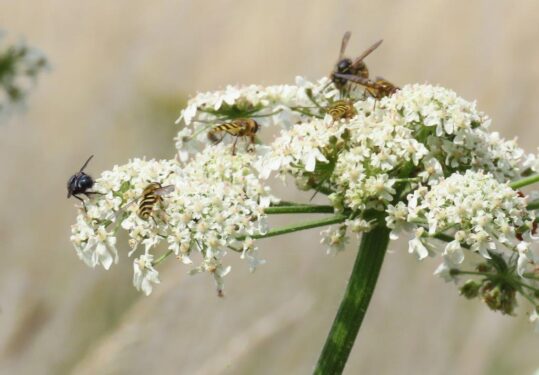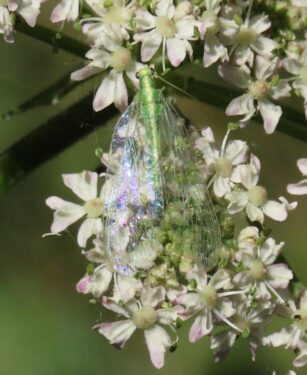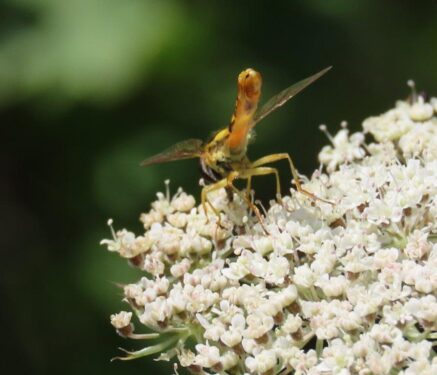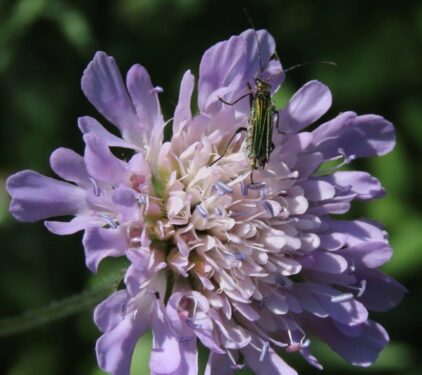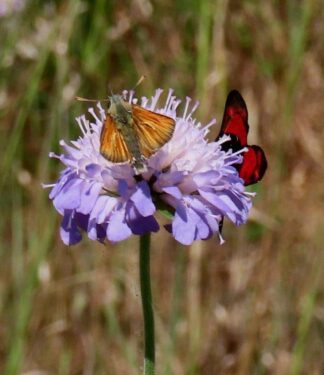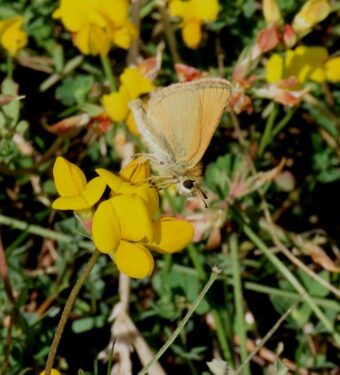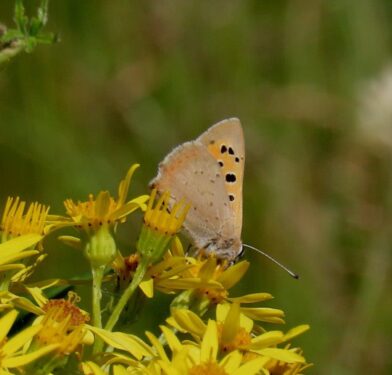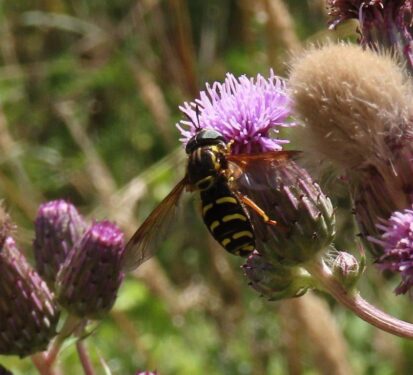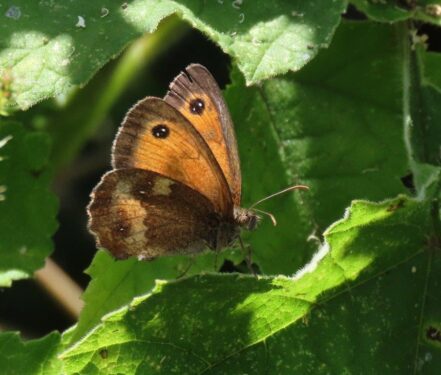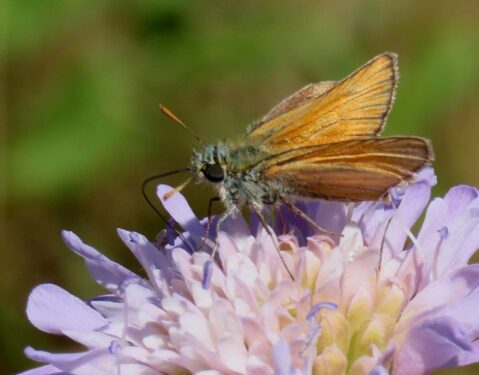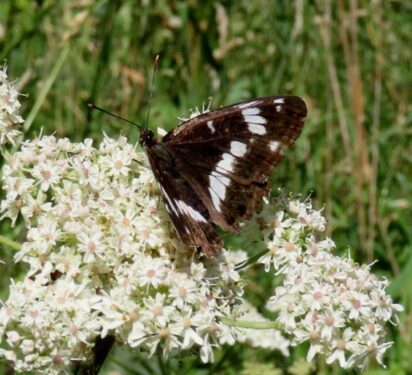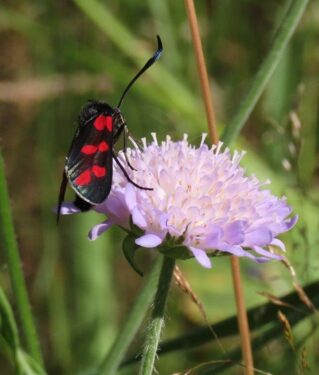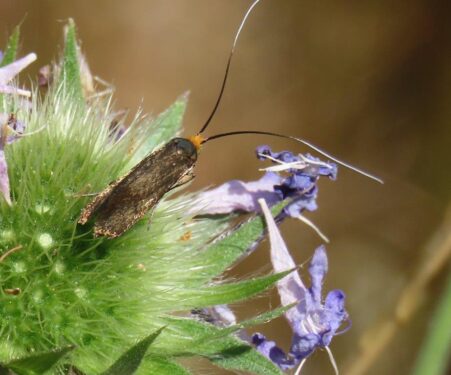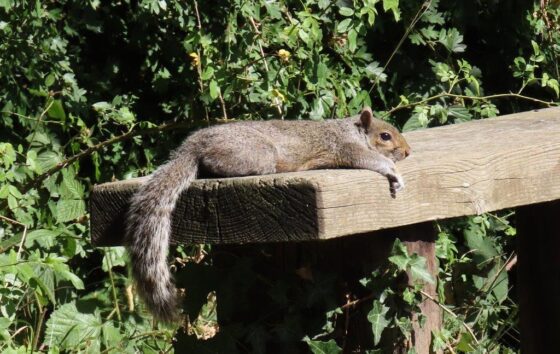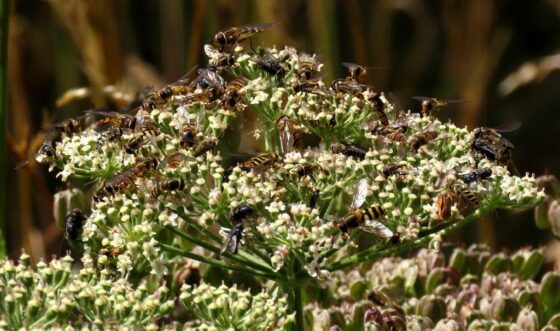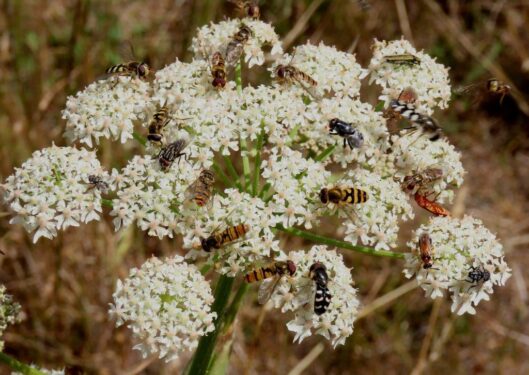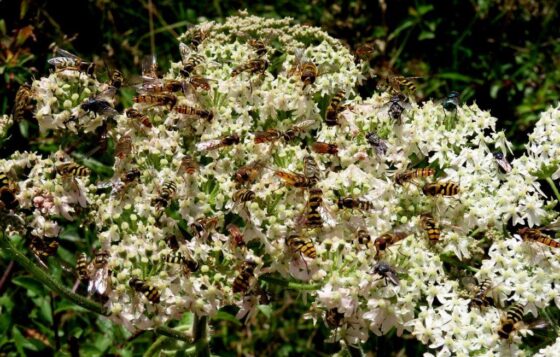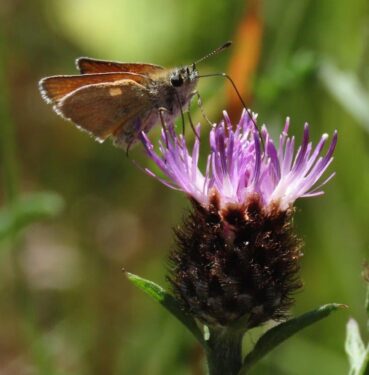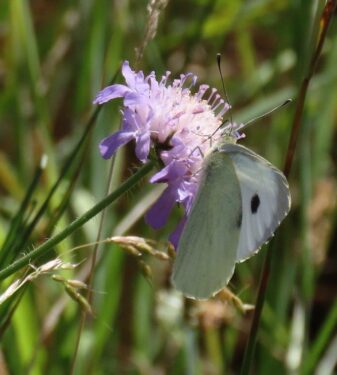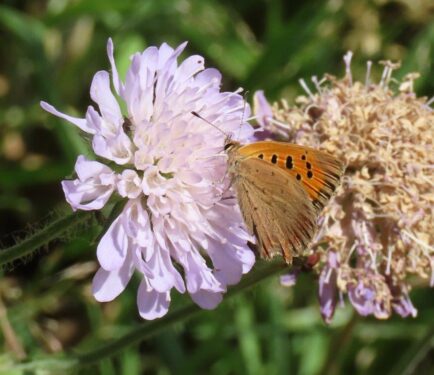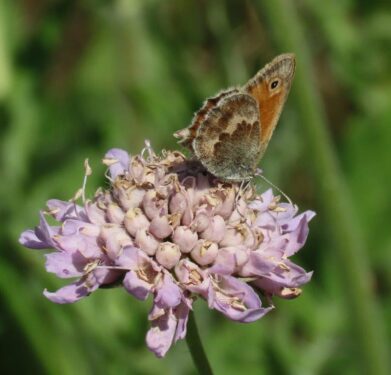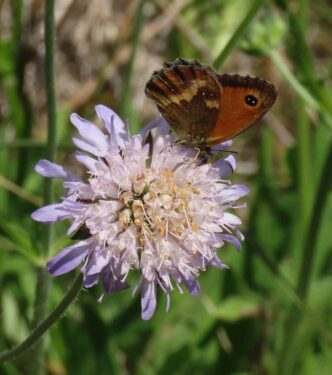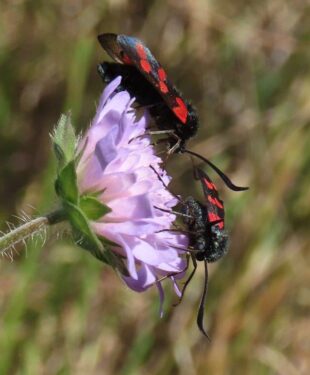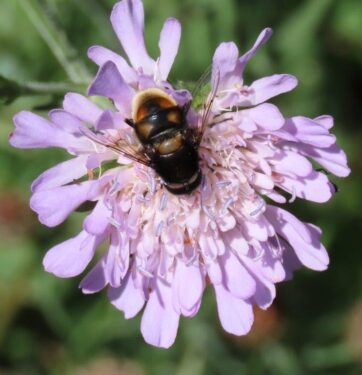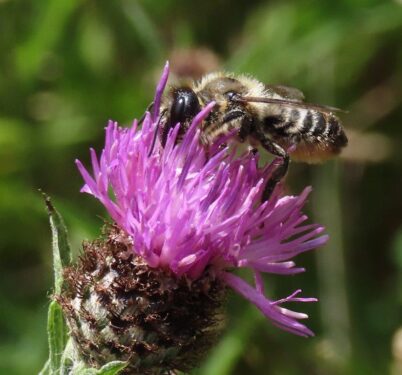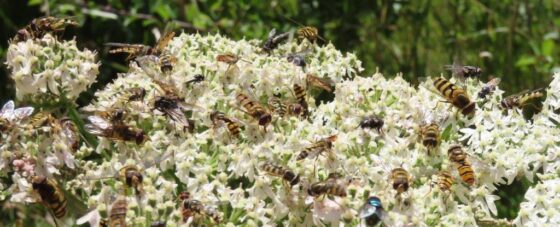The past couple of years have been pretty dire for our insect life. I was worried in 2023, more so in 2024, and openly voicing my concerns we were entering an era of ‘Silent Summers’.
The decline of insects is well documented, especially since WW2 as a result of climate change, habitat loss and fragmentation, and the overuse of pesticide poisons. But while declines continue, there are fluctuations around the average, and it seems that this summer is one of the ‘better than recent’ years. The buzz in the hedges, the splat on the windscreens – all point to a good year.
So it’s midsummer in Wivenhoe and the place to be to look for insects is Lower Lodge. But while for the past two years it has been looking in vain, this year they are back in force. So much so I visited twice in a few days, both of which were very hot days indeed.
On 4th July the Hogweed umbels were at their peak, and feeding all manner of beetles (including most numerously Hogweed Bonking Beetles), hoverflies and the rest. No names needed – just enjoy the bioabundance!
Other good nectar sources at the moment include Wild Carrot, Field Scabious, Bird’s-foot-trefoil, Creeping Thistle and Common Ragwort. These will all continue for a few weeks, and then the heavy lifting will be taken over by Common Knapweed and Bristly Oxtongue, so we can hope for more insect riches to come.
And as we come out of the ‘June Gap’, butterflies should now be a constant feature. On a very hot, but breezy, day there were three species of Skipper, three Browns, Small Coppers, Purple Hairstreaks, two Blues, plus several admirals (including a rather battered White Admiral) and Whites, and (as ‘honorary butterflies’) the day-flying moths 6-spotted Burnet and Brassy Longhorn.
It was hot. Very hot. Too hot for most other things other than fly-by Emperor Dragonflies and Brown Hawkers. The sunbathing squirrel says everything about that day!
——————————————————————————————————
But in the days before my second visit on 10th July, we had the ‘ladybird blizzard’, three days of sustained insect arrivals, presumably from the Low Countries. Indeed my second visit was on the third of those days, and the air was still full of flying hoverflies, ladybirds and Large White butterflies.
So what seemed like riches a week previously were supplemented manyfold by the new arrivals. The newcomers were numerous , but only a restricted number of species – one ladybird (7-spot), only half a dozen or so species of hoverfly, and probably only Large White and Red Admiral among the butterflies – and turned the umbels into something resembling tutti frutti ice-cream. And this was not a localized phenomenon – reports suggest that similar sights were being witnessed from Great Yarmouth to the Thames, and inland at least to Bury St Edmunds. The number of insects involved is simply inconceivable and incalculable.
Overall butterflies and burnets were also more numerous than a week previously, as expected due to the passage of the season:
And yes there were a few things worthy of note, here the furry hoverfly Eristalis intricaria, the parasite-fly Nowickia ferox and the leaf-cutter bee Megachile willoughbiella.
Of course we must not let complacency set in, and stop doing all we can to save the future planet just because (unusually) there are lots of insects around. Nothing has changed fundamentally compared to last year when I was complaining of the Silent Summer. The same pesticides are used profligately. Habitat loss and fragmentation is increasing in the drive to build more houses to satisfy a ‘crisis’ manufactured by housebuilder lobbyists. And climate collapse is accelerating, especially with world ‘leaders’ (and their hangers-on, Mr Starmer) in thrall to big oil.
There are always oscillations around a declining trend. Last year was a trough, this looks like a peak, as many of us will remember during the long, hot summer of 1976. It may well be due to weather patterns of the last few months. And almost certainly many of the insects we are seeing in coastal Essex are not home-bred. Thank goodness for immigration, as in so many aspects of life.
It is years like this one that give me hope though. As a conservationist over the past four decades, I have seen the continuing, worrying decline of wildlife, but I cling to hope that if nature is given the chance it can and will bounce back. It has to…
